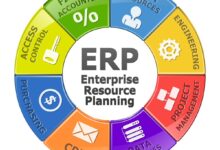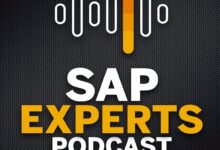ERP Selection Process: 7 Powerful Steps to Transform Your Business
Choosing the right ERP system can feel overwhelming, but with a clear roadmap, you can turn chaos into clarity and set your business up for long-term success.
Understanding the ERP Selection Process: Why It Matters

The ERP selection process is more than just picking software—it’s about aligning technology with your business strategy. A well-executed ERP selection process ensures that the chosen system supports core operations, scales with growth, and integrates seamlessly across departments. According to Gartner, over 60% of ERP implementations face delays or budget overruns due to poor initial selection. That’s why getting this phase right is critical.
What Is ERP and Why Does It Matter?
ERP, or Enterprise Resource Planning, refers to integrated software platforms that manage key business functions such as finance, HR, supply chain, manufacturing, and sales. Unlike standalone tools, ERP systems centralize data and processes, eliminating silos and improving visibility across the organization.
- Real-time data access across departments
- Improved decision-making through consolidated reporting
- Streamlined workflows and automation of repetitive tasks
“An ERP system is not just an IT project—it’s a strategic business transformation.” — Panorama Consulting Solutions
Common Misconceptions About ERP Selection
Many organizations enter the ERP selection process with flawed assumptions that can derail their efforts. One common myth is that ‘bigger brands are always better.’ In reality, a large vendor may offer robust features but lack industry-specific functionality or flexibility for mid-sized businesses.
- Myth: The most expensive ERP is the best — Truth: Fit matters more than price
- Myth: Cloud ERP is less secure — Truth: Modern cloud providers often exceed on-premise security
- Myth: Implementation is purely an IT responsibility — Truth: Business leadership must drive the initiative
Step 1: Define Your Business Requirements
Before evaluating vendors, you need a crystal-clear understanding of what your business needs from an ERP system. This foundational step in the ERP selection process determines every subsequent decision. Skipping it often leads to mismatched solutions and costly customizations down the line.
Conduct a Comprehensive Needs Assessment
Start by mapping out your current business processes and identifying pain points. Engage stakeholders from finance, operations, HR, IT, and sales to gather diverse perspectives. Use workshops, surveys, and process mapping exercises to document requirements.
- Identify inefficiencies in current workflows (e.g., manual data entry, delayed reporting)
- Determine compliance needs (e.g., GDPR, SOX, ISO standards)
- Assess integration requirements with existing systems (CRM, e-commerce, etc.)
Categorize Requirements: Must-Have vs. Nice-to-Have
Not all requirements are equal. Classify them into three tiers:
- Must-have: Core functionalities without which the system fails (e.g., financial closing, inventory tracking)
- Should-have: Important but not critical (e.g., advanced analytics, mobile access)
- Nice-to-have: Desirable features that add value but aren’t essential (e.g., AI-driven forecasting)
This prioritization helps avoid feature overload and keeps the ERP selection process focused on strategic goals.
Step 2: Assemble the Right Selection Team
The success of the ERP selection process hinges on having the right people involved. A cross-functional team ensures that technical, operational, and strategic perspectives are all represented. This collaborative approach increases buy-in and reduces resistance during implementation.
Key Roles in the ERP Selection Team
Building a balanced team is crucial. Here are the essential roles:
- Executive Sponsor: A C-level leader who champions the project and secures funding
- Project Manager: Oversees timelines, budgets, and coordination between teams
- Department Champions: Representatives from finance, operations, HR, etc., who understand functional needs
- IT Lead: Evaluates technical compatibility, security, and integration capabilities
- End-User Advocates: Frontline employees who provide real-world feedback on usability
Establish Decision-Making Frameworks
To prevent gridlock, define how decisions will be made. Will it be consensus-based? Or will the executive sponsor have final authority? Establish a scoring matrix early on to objectively evaluate vendors against predefined criteria.
- Weighted scoring model (e.g., functionality = 40%, cost = 20%, support = 15%)
- Regular review meetings with documented outcomes
- Transparent communication channels across the team
Step 3: Evaluate Deployment Options: Cloud vs. On-Premise
One of the earliest strategic decisions in the ERP selection process is choosing between cloud-based and on-premise deployment. Each has distinct advantages and trade-offs that impact cost, scalability, control, and maintenance.
Cloud ERP: Flexibility and Speed
Cloud ERP systems are hosted and managed by the vendor, offering faster deployment, lower upfront costs, and automatic updates. They’re ideal for companies seeking agility and remote access.
- Lower initial investment (subscription-based pricing)
- Scalable resources based on business needs
- Access from any device with internet connectivity
- Regular security patches and feature updates
For example, Oracle Cloud ERP offers AI-powered financials and real-time analytics, making it a strong contender for growing enterprises.
On-Premise ERP: Control and Customization
On-premise ERP systems are installed and maintained within your own data centers. While they require higher upfront investment, they offer greater control over data, security, and customization.
- Full control over infrastructure and data location
- Deep customization to match unique business processes
- No reliance on third-party uptime or internet connectivity
- Higher long-term maintenance and upgrade costs
Industries with strict regulatory requirements—like defense or healthcare—often prefer on-premise solutions for compliance reasons.
Step 4: Research and Shortlist Vendors
With requirements defined and deployment options clarified, the next phase of the ERP selection process is identifying potential vendors. This involves market research, analyst reports, peer recommendations, and demo evaluations.
Use Analyst Reports to Narrow Choices
Reputable sources like Gartner Peer Insights and Forrester Wave provide objective comparisons of ERP vendors based on functionality, customer satisfaction, and innovation. These reports help filter out underperforming solutions.
- Review Magic Quadrants and vendor ratings
- Analyze user reviews for recurring strengths or complaints
- Compare industry specialization (e.g., SAP for manufacturing, NetSuite for mid-market)
Request Demos and Proof of Concepts
Demos are not just sales pitches—they’re opportunities to test fit. Prepare a standardized demo script based on your top use cases (e.g., order-to-cash, procure-to-pay) and ask each vendor to walk through them.
- Test real-world scenarios relevant to your business
- Observe ease of navigation and user interface design
- Ask about customization limits and upgrade paths
For complex environments, consider a proof of concept (PoC) where the vendor configures a limited version of the system using your data.
Step 5: Evaluate Total Cost of Ownership (TCO)
Cost is a major factor in the ERP selection process, but it’s essential to look beyond the sticker price. The total cost of ownership (TCO) includes licensing, implementation, training, maintenance, and hidden fees that can inflate budgets over time.
Break Down the Cost Components
Understanding all cost elements prevents budget surprises. Here’s a breakdown of typical ERP expenses:
- Licensing Fees: Subscription (SaaS) or perpetual license costs
- Implementation Services: Consulting, data migration, configuration (often 50–100% of license cost)
- Customization & Integration: Tailoring the system to unique needs
- Training: User adoption programs for different roles
- Maintenance & Support: Annual fees (typically 15–20% of license cost)
- Infrastructure (for on-premise): Servers, storage, networking
According to Panorama Consulting, the average ERP project exceeds its initial budget by 45%, largely due to underestimated implementation costs.
Negotiate Smartly with Vendors
Never accept the first quote. Use competitive pressure by shortlisting multiple vendors and asking for best-and-final offers. Focus negotiations on:
- Discounts on multi-year contracts
- Inclusion of training and support in the package
- Flexible payment terms or phased rollout options
- Clear definitions of what’s included in ‘standard’ implementation
A well-negotiated contract can save hundreds of thousands over the system’s lifecycle.
Step 6: Assess Implementation Support and Vendor Reliability
Even the best ERP software can fail if implementation is poorly managed. A reliable vendor provides not just technology, but partnership. This step in the ERP selection process evaluates the vendor’s track record, support model, and ecosystem.
Check References and Case Studies
Ask shortlisted vendors for 2–3 customer references in your industry and company size. Prepare a list of questions:
- Did the project stay on time and on budget?
- How responsive was the vendor during and after implementation?
- Were there unexpected challenges or costs?
- Would you choose them again?
Also review published case studies on the vendor’s website and third-party platforms like Capterra or TrustRadius.
Evaluate the Partner Ecosystem
Many ERP vendors rely on third-party partners for implementation. Assess the strength and availability of their partner network:
- Are there certified partners in your region?
- What is the partner’s experience with similar projects?
- Does the vendor provide oversight or leave you solely with the partner?
For example, Microsoft Dynamics 365 has a vast global partner network, which can accelerate deployment but requires careful partner selection.
Step 7: Make the Final Decision and Plan for Go-Live
The final stage of the ERP selection process isn’t just about signing a contract—it’s about setting the foundation for a successful implementation. A structured go-live plan ensures smooth transition and user adoption.
Use a Scoring Matrix to Compare Finalists
Create a weighted evaluation matrix to objectively compare the top 2–3 vendors. Assign scores (e.g., 1–5) across key criteria:
- Functional fit (weighted 30%)
- Total cost of ownership (25%)
- Vendor reputation and support (20%)
- Implementation timeline (15%)
- Innovation and future roadmap (10%)
This data-driven approach minimizes bias and aligns the team around a shared decision.
Develop a Post-Selection Roadmap
Once the vendor is selected, immediately shift focus to implementation planning. Key actions include:
- Finalize the project charter and governance model
- Define data migration strategy and cleansing plan
- Schedule training sessions by role and department
- Establish KPIs for post-go-live success (e.g., system uptime, user adoption rate)
- Plan for change management and internal communication
Remember, the ERP selection process doesn’t end at purchase—it’s the first step in a transformation journey.
Common Pitfalls to Avoid in the ERP Selection Process
Even well-intentioned teams can stumble during the ERP selection process. Recognizing these common mistakes early can save time, money, and frustration.
Skipping Executive Sponsorship
Without active involvement from senior leadership, ERP projects often lose momentum. The executive sponsor must champion the initiative, resolve conflicts, and ensure alignment with business strategy.
Over-Customizing the System
While customization seems appealing, it increases complexity, cost, and risk. Modern ERP systems are designed to be configured, not customized. Stick to out-of-the-box functionality whenever possible to ensure smoother upgrades and support.
Underestimating Change Management
Technology is only half the battle. Employees resist change, especially when new systems disrupt familiar workflows. Invest in change management programs that include training, communication, and feedback loops.
How Industry and Company Size Influence ERP Selection
There’s no one-size-fits-all ERP solution. The ideal system depends heavily on your industry, business model, and scale. Understanding these factors sharpens your focus during the ERP selection process.
Industry-Specific Needs
Different industries have unique requirements:
- Manufacturing: Needs shop floor control, bill of materials (BOM), and production scheduling (e.g., SAP S/4HANA)
- Retail: Requires omnichannel inventory, POS integration, and demand forecasting (e.g., Oracle Retail)
- Professional Services: Focuses on project accounting, time tracking, and resource management (e.g., FinancialForce)
- Distribution: Needs warehouse management, logistics, and vendor management (e.g., Infor CloudSuite)
Company Size and Scalability
Small to mid-sized businesses (SMBs) often benefit from cloud-based, all-in-one solutions like NetSuite or Acumatica, which offer rapid deployment and lower TCO. Larger enterprises may require modular, scalable platforms like SAP or Oracle that support global operations and complex compliance needs.
The Role of Emerging Technologies in Modern ERP Systems
Today’s ERP systems are no longer just back-office tools. They’re intelligent platforms powered by AI, machine learning, IoT, and analytics. These technologies are reshaping the ERP selection process by introducing new capabilities.
AI and Predictive Analytics
Modern ERPs use AI to automate routine tasks, detect anomalies, and provide predictive insights. For example:
- AI-driven cash flow forecasting
- Automated invoice matching and fraud detection
- Predictive maintenance in manufacturing
Vendors like SAP and Oracle embed AI across their suites, enabling smarter decision-making.
Mobile and User Experience
Employees expect ERP systems to be as intuitive as consumer apps. Leading vendors now offer mobile-first interfaces, voice commands, and role-based dashboards that improve usability and adoption.
- Field service technicians accessing work orders on tablets
- Managers approving expenses via smartphone
- Real-time alerts and notifications
What is the first step in the ERP selection process?
The first step is defining your business requirements. This involves identifying pain points, engaging stakeholders, and documenting must-have functionalities. A clear requirements document guides every subsequent decision and ensures alignment with strategic goals.
How long does the ERP selection process typically take?
The ERP selection process usually takes 3 to 6 months, depending on the complexity of the organization and the number of vendors evaluated. Larger enterprises with global operations may take up to a year to complete the process thoroughly.
Should we choose cloud or on-premise ERP?
The choice depends on your priorities. Cloud ERP offers faster deployment, lower upfront costs, and automatic updates—ideal for agility. On-premise provides greater control and customization, suitable for highly regulated industries. Most modern businesses are shifting toward cloud due to scalability and innovation speed.
How do we ensure user adoption after ERP implementation?
User adoption starts during the selection process. Involve end-users early, provide role-based training, and implement change management strategies. Clear communication, ongoing support, and measuring adoption KPIs post-go-live are critical for success.
Can we switch ERP vendors if the first choice doesn’t work out?
Yes, but it’s costly and disruptive. Data migration, retraining, and lost productivity make switching difficult. That’s why thorough evaluation during the ERP selection process is vital to avoid regrettable decisions.
Selecting the right ERP system is one of the most impactful decisions a business can make. By following a structured ERP selection process—starting with clear requirements, assembling the right team, evaluating options objectively, and planning for implementation—you set the stage for long-term success. Avoid common pitfalls, leverage expert insights, and remember that the goal isn’t just to buy software, but to transform how your organization operates. With the right approach, your ERP investment can drive efficiency, visibility, and growth for years to come.
erp selection process – Erp selection process menjadi aspek penting yang dibahas di sini.
Further Reading:



